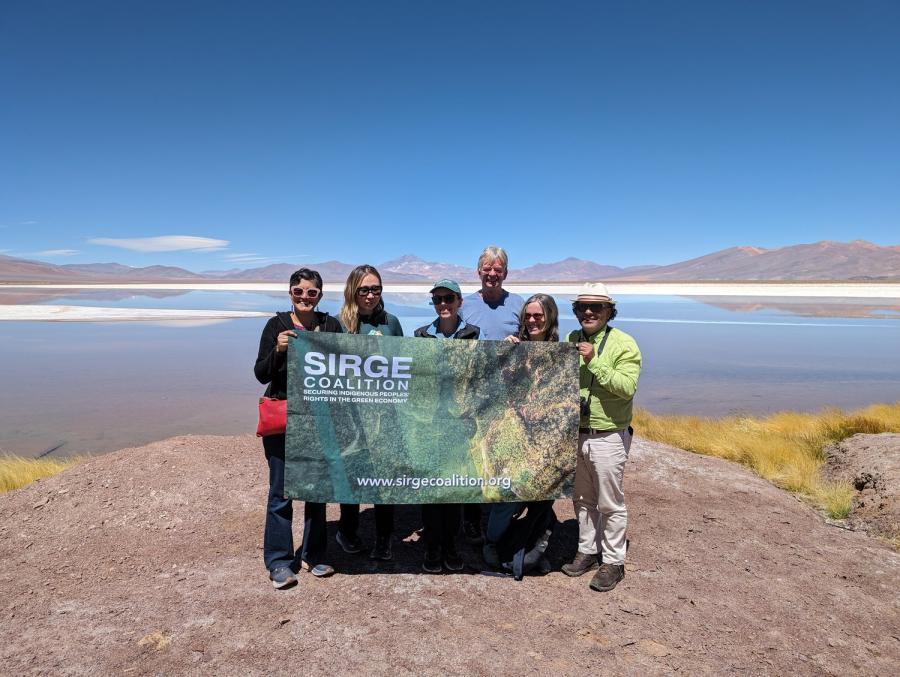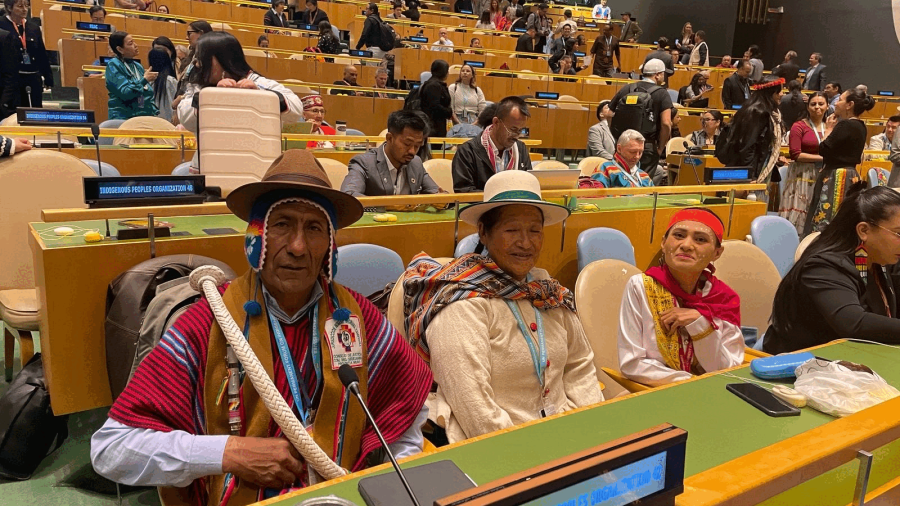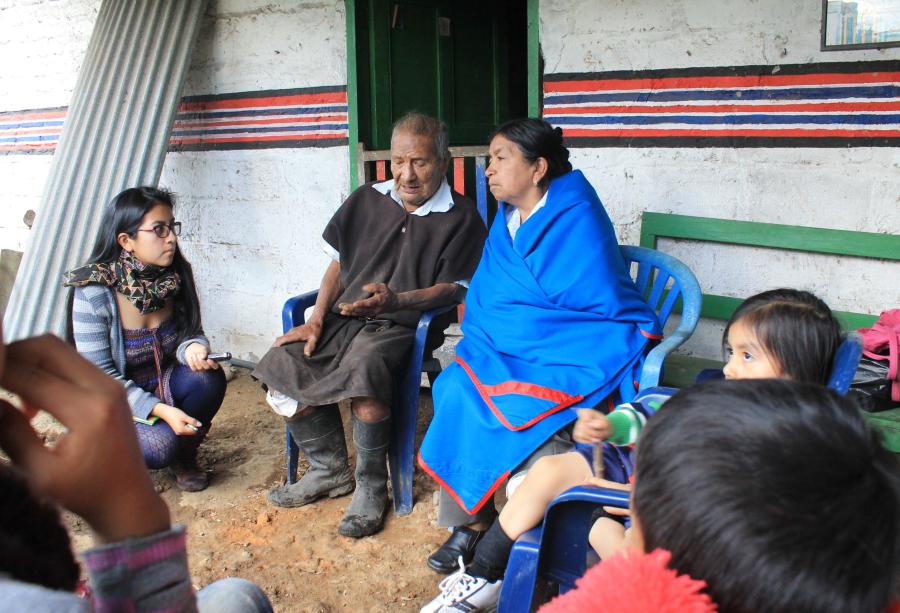Thirty-two years ago when Cultural Survival was founded, its name aptly described its mission. Outright genocide ofindigenous peoples was no longer the norm, but ignorance, negligence, greed, and the good intentions of those who sought to bring development to “backward” groups combined to undermine centuries-old ways of life, obliterate languages, and isolate and marginalize individuals whose sense of identity depended on cultural and group cohesion.
Thirty-two years ago was also about the time that the international human rights movement emerged. While international human rights law owes its origins to the aftermath of World War II, the states that created it resisted establishing meaningful enforcement mechanisms. In their absence, advocates concerned about human rights formed non-governmental organizations (NGOs) to pressure violators to comply. International human rights NGOs investigate and report on human rights abuses wherever they occur. Their reports are relied on by the news media, many governments, and inter-governmental institutions. The international NGOs see themselves as advocates for victims and supportive partners of their domestic NGO counterparts. They lobby governments to take human rights into account in their foreign policies and press the United Nations and other inter-governmental organizations to put pressure on rights abusers. In addition, they demand that governments establish domestic enforcement mechanisms, such as independent judiciaries.
When it comes to indigenous rights, Cultural Survival has been the quintessential human rights NGO. Over the decades, it has used every tool in the human rights toolkit to change governmental and international policy toward indigenous peoples. It has provided encouragement and even development assistance to indigenous groups seeking to improve the quality of their lives. In these pages, in its newspaper Voices, and on the internet, it has educated policy-makers, researchers, and the public about indigenous concerns.
In many respects, Cultural Survival’s original mission has been fulfilled. Its education and advocacy work contributed to a revolution of empowerment for indigenous people around the world. Indigenous people have discovered for themselves the power of advocacy at the state and international levels. They have learned to use publicity to draw attention to their plight, to network, and to combine forces to function in the internationalized world to benefit their people. They have demonstrated that traditional cultural knowledge can save lives, resolve disputes, and enhance the quality of life for all of humanity.
But they are not home free. Obstacles are everywhere—and most of them are far bigger and better financed then even the most elaborate NGO networks. Indigenous people have learned empowerment, but they must find ways to become even more effective in a world that, like shifting sands, is changing radically under their feet.
Just as indigenous peoples are confronting enormous change, so to Cultural Survival must adapt its work to the present and future needs of indigenous peoples. There is still a need to document abuses, but there is equally a need to document the good—to impress upon the rest of the world what cultural diversity and the specialized knowledge possessed by different indigenous peoples offer to all of humanity. There is still a need to put pressure on governments and international entities—both governmental and nongovernmental—to protect indigenous rights, but there is equally a need to find new ways to understand and partner with governments, intergovernmental organizations, NGOs, and corporate and religious interests to find solutions that simultaneously protect the rights of indigenous peoples and serve the wider interests of humanity. There is still a need to offer direct assistance, but there is an even greater need to offer ourselves as agents—to make available to indigenous peoples the technical, legal, or other expert assistance they need to help themselves.
Having been nurtured by the discipline of anthropology, this is a natural role for Cultural Survival. Because anthropologists are trained to become “participant/observers” in the communities they study, they are uniquely positioned to teach indigenous people to become participant/observers in the larger globalizing world without losing their own cultures and identities. Because anthropologists must master listening to and understanding what indigenous people tell them, they are well placed to culturally interpret indigenous needs and requests so that the rest of the world can also understand them.
As an NGO Cultural Survival can go a step further: we can locate the lawyers, financial consultants, dam construction experts, or as is highlighted in this issue of Cultural Survival Quarterly, the public health specialists, who can fulfill indigenous peoples’ needs and requests. Furthermore, we can assist these agents to do so with cultural sensitivity and in a way that expands indigenous peoples’ capacity to help themselves.
As I take the helm at Cultural Survival, David Maybury-Lewis, Cultural Survival’s founder, mentor, and shepherd-in-chief is retiring from his “day job” as a professor of anthropology at Harvard University. David’s students recall him as their favorite teacher; many colleagues have called him “the conscience of anthropology”; members of my staff describe him as “a saint.” For me, David embodies what it means to be both a great anthropologist and a great indigenous rights advocate: he is courageous and humble; a committed learner and a dedicated teacher; intensely curious about human diversity and passionate about protecting it. It is an honor to have his confidence, and reassuring to have him as a role model as I endeavor to lead Cultural Survival to meet the challenges that lie ahead in a meaningful and effective way.
Before I invite readers to open the pages of this CSQ edition dedicated to rainforests and the health of indigenous peoples living in them, let me share with you another of David’s much admired qualities: his storytelling ability. In his book, Millennium: Tribal Wisdom and the Modern World, David recounts his firsthand exposure to the ways indigenous peoples have struck a balance between traditional holistic healing mechanisms and modern medicine, and in doing so teaches us all the importance of recognizing indigenous peoples’ right to control the design and management of their health programs with the input and access to, but not the imposition of, Western medical ideas.
From 1955 to 1957, David and his wife Pia did fieldwork with the Xerente of central Brazil, whose traditional ways of life were being eroded by encroaching Westernization. The Xerente were reputed to perform a ceremony similar to the visionary, self-mortifying sun dance ceremony once performed by western plains indigenous groups in the United States.
By the time Pia and I reached the Xerente, it did not seem that they were any longer given to the visionary ceremonies of their traditional past. Or so we thought until an epidemic struck the village and babies began to die. It was a nervous time for us: we have not been with the Xerente long and our meager supplies of aspirin and other first-aid remedies were no match for the creeping sickness. It slowly dawned on us that we were suspected of causing it in some way, and these suspicions were allayed only when Pia herself got sick.
By this time Sizapi, the shaman, was dreaming intensively, traveling through space and time to track down the cause of the disease. Each day he marshaled the villagers, men, women, and children, and they danced to combat the plague. Each night I danced with them till I lost all notion of time and space and felt myself wheeling and reeling the starlit sky. This went on for days—how many I do not remember—until the cold night, thinning into morning, when the dancing stopped. The dancers squatted down around their fires. Nobody spoke. They sat motionless and I was surprised, for Xerente are usually casual and conversational even in the middle of important ceremonies. We sat there for hours or minutes, I could not tell. The firs stopped crackling and glowed like wounds in the night. The Xerente waited. At last a signing movement ruffled through the lines of men. My companion nudged me.
“Listen!” he said. “Can you hear it?”
“Hear what?”
“The souls of the dead. They are whistling all around us.”
At this point Sizapi jumped to his feet and shook his dance rattle toward the heavens. Suddenly the tired dancers were leaping and bellowing, their energy and confidence restored by their epiphany.
I did not, myself, hear the whistling of the souls of the dead, although I danced along with my companions to prepare for their visit. I have not been trained by my society to expect to meet spirits, and I have not been taught to recognize them.
Shortly thereafter the epidemic ended. Pia also got well, though the Maybury-Lewis’ have never been sure whether the souls of the dead or the contents of their first aid kit were responsible for her cure.



